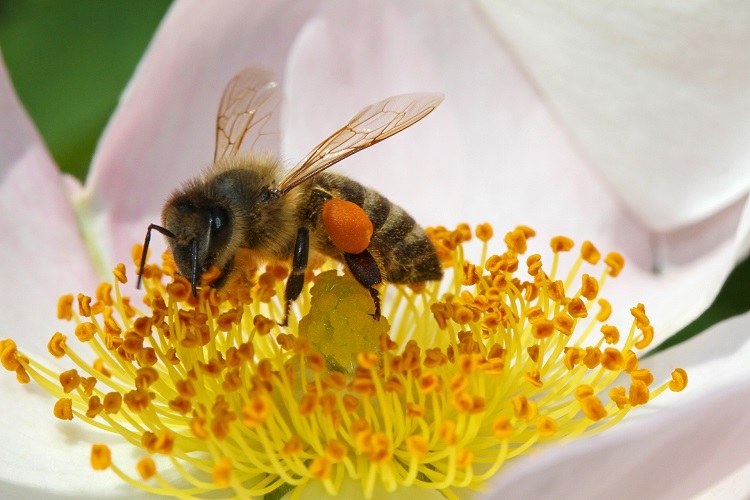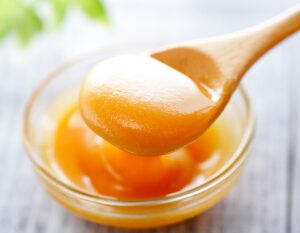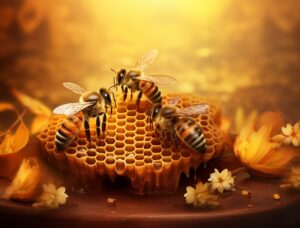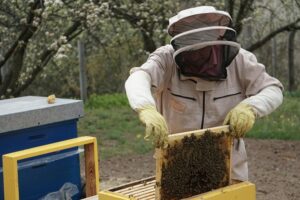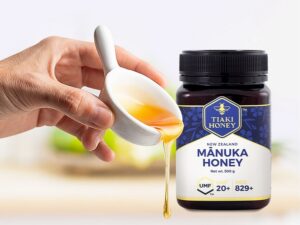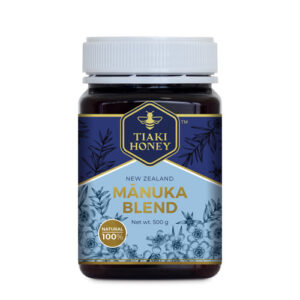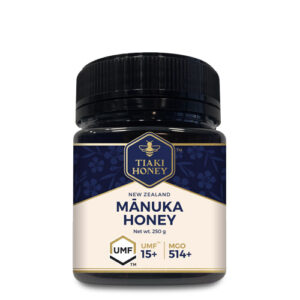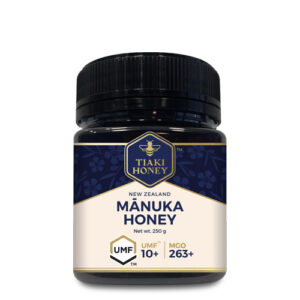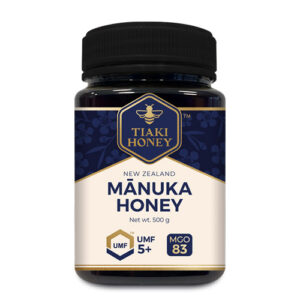The Role of Bees in Manuka Honey Production
Manuka honey is a type of honey that has been making waves in the health and wellness industry in recent years.
This honey is derived from the nectar of the manuka plant, a shrub that grows in New Zealand and parts of Australia.
Our hives are situated in some of the most isolated, pristine locations of New Zealand because our Tiaki Manuka Honey can only be produced in regions rich in natural Manuka blooms.
What makes manuka honey so special is its unique antibacterial properties, which are attributed to its high levels of methylglyoxal (MGO).
But how is manuka honey made?
The answer lies in the role of bees in manuka honey production. In this article, we’ll take a closer look at the fascinating process of how bees make this liquid gold, and what makes manuka honey so unique.
The Anatomy of a Honey Bee
Before we dive into the specifics of how bees make manuka honey, let’s first take a closer look at the anatomy of a honey bee. Honeybees are small, flying insects that belong to the family Apidae. They have a unique body structure that enables them to collect nectar and turn it into honey.
Here are some of the key parts of a honey bee:
- Head: The head of a honey bee contains the eyes, antennae, and mouthparts. The mouthparts are used for feeding on nectar and pollen.
- Thorax: The thorax is the middle part of a honey bee’s body. It contains wings and legs, which are used for flying and collecting nectar.
- Abdomen: The abdomen is the rear part of a honey bee’s body. It contains the digestive and reproductive organs.
The Role of Bees in Manuka Honey Production
Bees play a crucial role in the production of manuka honey. Here’s a step-by-step breakdown of how they do it:
Collecting Nectar
Honey bees collect nectar from flowers using their long, tube-shaped tongues. When they find a flower with nectar, they use their tongues to suck up the liquid and store it in their honey stomachs.
Digesting the Nectar
Once a honey bee has collected enough nectar, it returns to the hive and regurgitates the liquid into the mouth of another bee. This process is repeated until the nectar has been digested and partially broken down.
Honey Production
Once the nectar has been partially digested, the bees store it in the honeycomb, where it is further broken down and transformed into honey. The bees fan their wings over the honeycomb to help evaporate any excess water, which thickens the honey.
Sealing the Honeycomb
Once the honey has reached the desired thickness, the bees cap the honeycomb cells with wax to keep the honey fresh.
Harvesting the Honey
Finally, the beekeeper harvests the honey by removing the wax caps and extracting the honey from the honeycomb cells.
What Makes Tiaki Manuka Honey Unique?
So, what sets Tiaki manuka honey apart from other types of honey? The answer lies in its high levels of methylglyoxal (MGO), a compound that has been shown to have antibacterial properties.
MGO is produced when dihydroxyacetone (DHA), a compound found in the nectar of manuka flowers, is converted into MGO by the bees’ enzymes. The higher the concentration of MGO in the honey, the greater its antibacterial properties.
In addition to its antibacterial properties, manuka honey is also prized for its unique flavor profile. It has a rich, earthy taste with hints of caramel and a slightly
How to Identify Genuine Manuka Honey
Due to its popularity and unique properties, manuka honey has become a target for counterfeiters. Here are some tips to help you identify genuine Tiaki manuka honey.
Look for the UMF® rating: Manuka honey that has a Unique Manuka Factor (UMF®) rating on the label has been independently tested and verified for its MGO content.
Check the source: Genuine Tiaki manuka honey comes from New Zealand or parts of Australia where manuka plants grow.
Read the label: The label should list “manuka honey” as the main ingredient, and the MGO content should be clearly displayed.
Manuka Honey FAQs
Q: Can all bees produce manuka honey?
A: No, only honey bees that collect nectar from manuka plants can produce manuka honey.
Q: Is manuka honey safe for everyone to consume?
A: While manuka honey is generally safe for most people to consume, it can cause allergic reactions in some individuals. If you have a known allergy to bees or honey, it’s best to avoid consuming manuka honey.
Q: Can manuka honey cure illnesses?
A: While manuka honey has been shown to have antibacterial properties, it should not be used as a replacement for medical treatment. It’s always best to consult with a healthcare professional before using manuka honey to treat any health conditions.
Manuka Honey Production Summary
In conclusion, bees play a crucial role in the production of manuka honey. By collecting nectar from manuka flowers and transforming it into honey, they create a sweet and potent elixir that has become a beloved staple in the health and wellness industry.
Understanding the role of bees in manuka honey production can help us appreciate the hard work that goes into creating this liquid gold, while also ensuring that we are able to identify and consume genuine manuka honey.
Journey through the process of crafting this liquid gold. Explore our wide range of UMF™ Manuka Honey!
